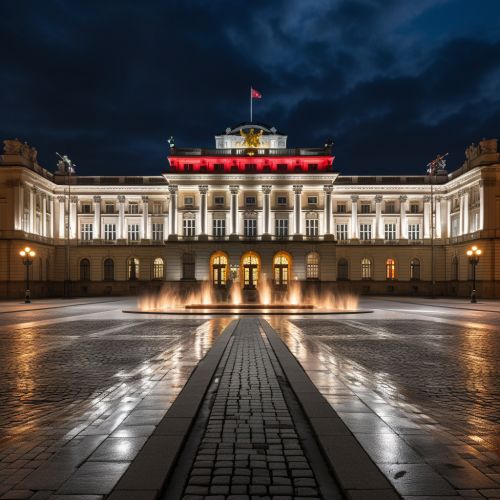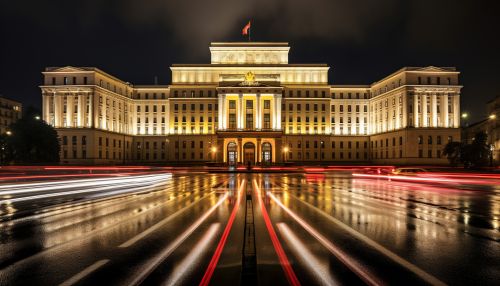Sejm
History
The Sejm is a significant institution in the political landscape of Poland, with its roots tracing back to the 14th century. The term "Sejm" itself originates from an old Slavic word meaning "gathering". Its historical evolution has been marked by periods of great influence and periods of decline, reflecting the broader socio-political changes in Poland.


In the early days, the Sejm was not a permanent institution. Instead, it was a gathering of nobles, clergy, and sometimes even townspeople, convened by the king to discuss matters of state. This form of Sejm, known as the "walny sejm" or "general sejm", was a consultative body rather than a legislative one.
The 15th and 16th centuries saw the Sejm gain more power and become a regular institution. The Nihil novi act of 1505, which stated that no new laws could be passed without the consent of the Sejm, was a significant milestone in its evolution. This period also saw the development of the "liberum veto" principle, which allowed any member of the Sejm to block legislation by objecting to it.
The 18th century brought challenges and changes to the Sejm. The liberum veto principle, which had once empowered individual members, had become a tool for foreign powers to disrupt Polish politics. This, combined with internal divisions, led to the partitions of Poland in the late 18th century and the dissolution of the Sejm.
The Sejm was resurrected in the 20th century, following Poland's regaining of independence after World War I. The interwar period saw the Sejm as a vibrant democratic institution, although it was marred by political instability. The Sejm was suppressed during World War II but was reinstated after the war, albeit as a tool of the communist regime.
Since the fall of communism in 1989, the Sejm has been a cornerstone of Poland's democratic system. It is now a fully-fledged legislative body, with significant powers and responsibilities.
Structure and Function
The modern Sejm is the lower house of the Polish parliament, with the upper house being the Senate. It consists of 460 deputies, who are elected for a four-year term through a proportional representation voting system.
The Sejm's primary function is to pass laws. A bill can be introduced by a group of deputies, the Senate, the President, or a group of citizens. Once a bill is introduced, it goes through three readings in the Sejm, during which it can be debated, amended, or rejected. If a bill is passed by the Sejm, it goes to the Senate, which can propose amendments. The final decision on any amendments proposed by the Senate lies with the Sejm.
In addition to its legislative function, the Sejm has other important roles. It controls the state budget, ratifies international treaties, and exercises control over the executive branch. The Sejm also has the power to declare a state of war, approve military deployments abroad, and impeach the President.
Current Role and Influence
In the current political system of Poland, the Sejm holds significant power. It is the primary legislative body, and its control over the budget gives it substantial influence over the country's economic policy. The Sejm's role in ratifying treaties and controlling the executive branch also makes it a key player in Poland's foreign policy.
Despite its power, the Sejm is not without challenges. Political polarization and frequent changes in government can lead to legislative gridlock. Moreover, the Sejm's reputation has been tarnished by scandals and allegations of corruption in the past. Nevertheless, it remains a vital institution in Poland's political system.
